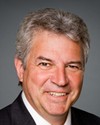The intention of the pilot project, which I referred to a couple of times, including the siting and engineering reviews, is twofold.
First of all, it is to identify the real costs of doing Atlantic salmon in British Columbia on a commercial scale. Right now we don't have demonstration projects on a commercial scale that can actually bring that information forward. We have debates about technology and about what the costs and energy requirements might be.
The second important aspect of the project is to investigate the size of the fish that we deliver into the ocean beyond the 100 gram smolt level, that is, to investigate 300 gram, 500 gram, and one kilogram fish delivered into the net pens. These things also haven't been explored, so it's a combination of those two.
Where is it at? To analyze the program at a 2,500 tonne commercial level, the information from the 300 tonne pilot project will be extrapolated to that the 2,500 tonne level. The 300 tonne facility is going to cost us in the neighbourhood of $8 million to build in British Columbia. We are currently at a place where we're trying to attract and find the funds to move forward on that. We haven't yet identified the funds. Internal funding is not forthcoming at this point in time. With the current situation for salmon in North America, we're going into a bit of a decreased price scenario, so we don't have the ability to move forward, which we would have had a few years ago when the pricing of salmon was strong.
To answer your question, we're at a point where we've made some decisions on technology, and have a site and are moving forward on getting the site work completed, but we don't have a firm date for beginning the pilot itself.




